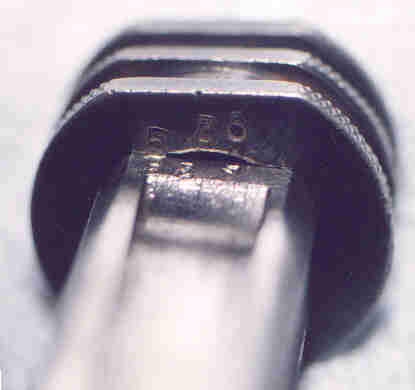Buying
these Guns
How can you tell if the gun you are
looking at has been refinished or faked in some way? This section has tips—some
general to buying any old gun, and some specific to these ones.
General Tips:
Here
are a couple of general tips on spotting refinished (reblued)
guns.
(a) If the
gun has a really nice blue job but pitting in various places, itfs been reblued (be sure to look under the grip panels; these areas
are often neglected when the gun is buffed in preparation for the reblueing).
(b) If the
barrel is not immaculate but the overall finish it, it has been reblued (how could a gun get a heavily pitted barrel and
not even show normal holster wear?)
(c) Look
carefully at the markings, especially the little inspection markings. If the
edges are too smooth, this can be a sign of the buffing that often precedes rebluing.
Specific Tips:
Here
are some specific tips:
(a) The
Japanese NEVER, EVER put a mum on ANY of their military handguns (a
chrysanthemum is the crest of the Imperial Family and was commonly marked on
the receiver of Japanese military rifles;
collectors call it a gmumh). If a handgun has a mum on it, itfs a fake. Itfs
that simple (see
(b) Finding
the serial numbers on a Type 14 to see if they all match: (photos to come
showing how you can find most of the serial numbers without taking the gun
apart, which might distress the current owner, especially if he doesnft know
how to strip one or get it back together!).
Pulling back the bolt allows you to see the serial
numbers (usually just the last three digits) on the bolt and cocking piece as
you can see here.

(c) Check
the production figures (available on the Banzai website) before accepting
claims about how rare a particular model is. I have had people try to tell me
the large trigger guard Type 14 (so-called gKiska modelh) is rare, when they
are far from it. In fact, there were lots that reached the
Last updated:
Click here to go back to the main page: Nambu World Home Page